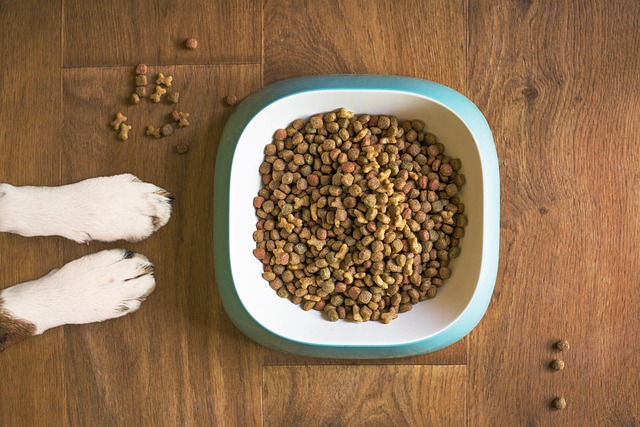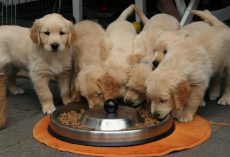If your dog’s been looking a little rounder lately, you’re not alone—weight gain is incredibly common in pets. But noticing those extra pounds early is the first step toward helping your best friend get back to a healthier, happier life.
So how do you know if your dog needs to slim down, and what’s the best food to support safe weight loss?
Here's how to tell if your dog is truly overweight or obese, why managing weight matters so much, and how to pick the right low-calorie food for your pup’s needs.
Why Choose a Weight-Loss Dog Food?
The biggest benefit of diet formulas is simple: fewer calories per cup, making it easier for overweight dogs to lose weight without feeling hungry. But low-fat or low-calorie doesn’t always mean the food is right for your dog.
Your dog’s daily calorie needs depend on factors like age, breed, and activity level—so always ask your vet for guidance. Some dogs actually require more calories than typical “diet” foods provide.
In fact, many vets recommend trying your dog’s regular adult formula first—just carefully measuring portions and limiting treats to no more than 10% of daily calories. A specialty diet food isn’t always necessary.
But your vet can help tailor the plan so your dog gets the right nutrition and safely loses weight.
How to Choose the Best Weight-Loss Food
A good weight-loss food should be:
- Lower in calories
- High in protein to preserve muscle mass
- Rich in fiber to help your dog feel full
- Balanced and complete for long-term feeding
Some options are available over the counter, while others require a prescription. Prescription diets can be especially helpful for dogs who struggle to lose weight through portion control alone.
Veterinarians consistently recommend choosing foods from larger, well-established brands with strong nutrition research and high-quality control standards. Some vet-trusted brands include:
- Purina Pro Plan
- Hill’s Science Diet
- Royal Canin
- Blue Buffalo
Always check with your vet before switching foods—they’ll help you find the safest option for your dog.
Best Dog Foods for Weight Loss
Here are top-rated options recommended by vets and formulated with high-quality ingredients.
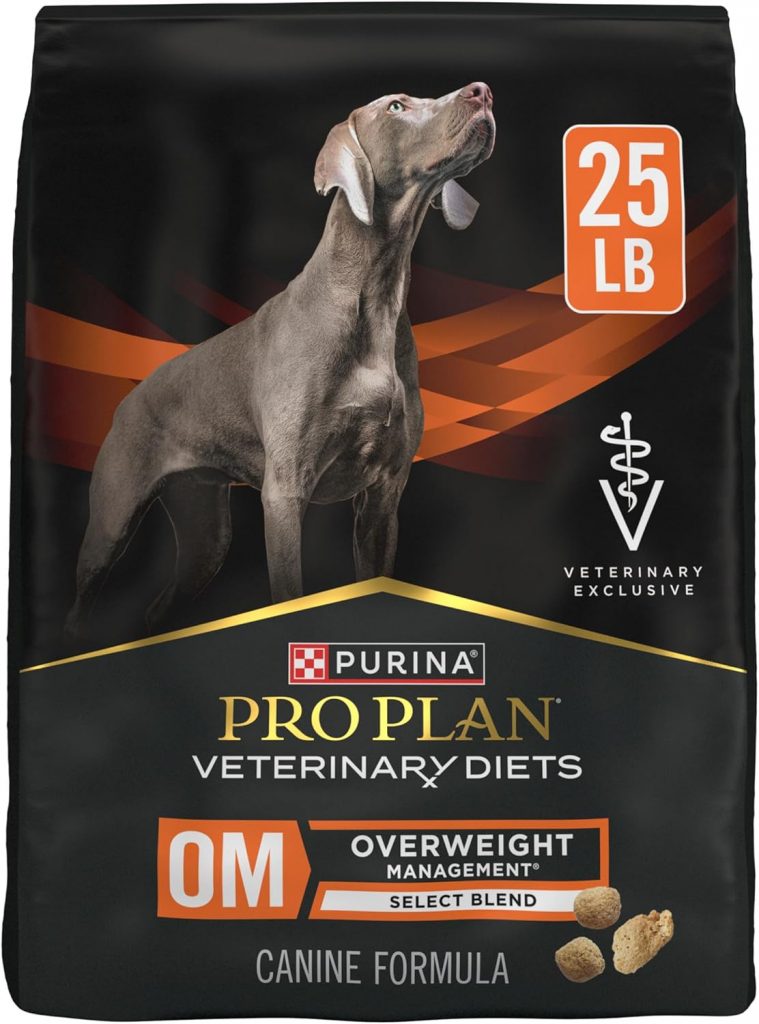
Best Overall: Purina Pro Plan Veterinary Diets Overweight Management Dry Food
Low in fat, low in calories, and high in protein, this prescription formula supports steady weight loss while preserving lean muscle. It’s available in both dry and wet food versions.
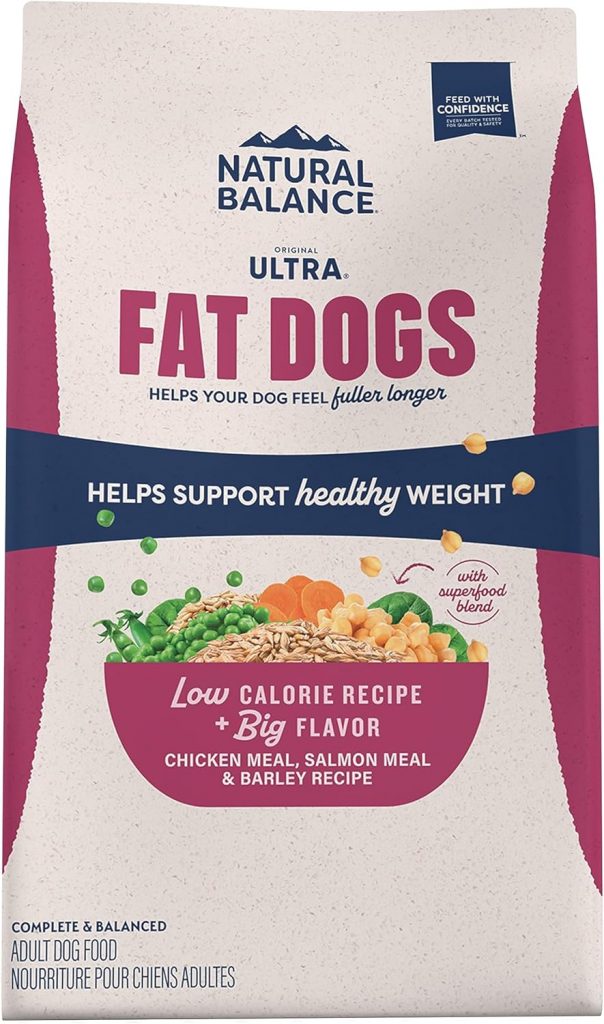
Great for Keeping Dogs Full: Natural Balance Fat Dogs Low Calorie Dry Food
Packed with chicken and salmon for muscle-supporting protein, this reduced-calorie formula is designed to keep your dog satisfied between meals.

Best Prescription Diet for Metabolism Support: Hill's Prescription Diet r/d Weight Loss Dry Food
Formulated with lysine and L-carnitine to boost metabolism, plus high fiber to curb hunger, this vet-prescribed diet helps dogs burn calories efficiently while keeping their immune system strong.
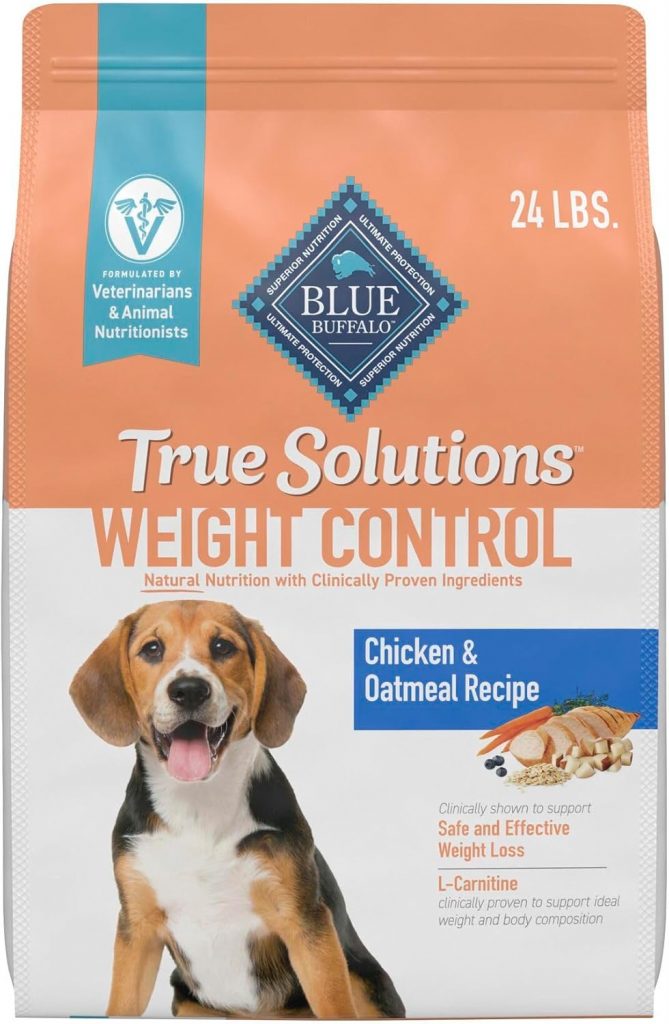
Best Fiber-Rich Option: Blue Buffalo True Solutions Weight Control Dry Food
Starting with real chicken, this dog food is made with the ideal caloric balance to help manage weight, plus L-Carnitine to support ideal body composition and enriched fiber to help your dog feel full.

Best for Maintaining Muscle Mass: Royal Canin Veterinary Diet Satiety Support
This prescription diet uses high protein and high fiber to promote muscle-building while preventing overeating. It's especially helpful for dogs who constantly beg or fixate on food.
How to Pick the Right Food for Your Dog
Finding the perfect diet may take a little trial and error. Some dogs don’t tolerate certain proteins or ingredients—chicken causes itchiness in some dogs, beef may cause digestive upset in others.
You may need to try several diets before finding the right long-term fit.
Most vets also recommend avoiding grain-free diets unless your dog has a documented grain allergy. Whole grains are nutritious, and grain-free diets have been linked with heart issues like dilated cardiomyopathy.
Once you find a food that works, stick with it.
How Much Should You Feed?
Feeding depends on:
- Your dog’s size
- The specific formula
- Your pup’s unique metabolism
Use the feeding chart on the bag as a starting point—but just like humans, dogs may need more or fewer calories depending on their lifestyle. Your vet can calculate the ideal amount to support healthy, steady weight loss.
Other Ways to Help Your Dog Lose Weight
Food is only one piece of the puzzle. Try these vet-approved strategies:
- Increase daily walks and activity
- Try hydrotherapy for obese or arthritic dogs
- Replace treats with pieces of regular kibble
- Avoid giving human food
- Feed based on your dog’s goal weight, adjusting gradually
- Ask your vet about weight-loss programs with monthly check-ins
With consistent habits, plenty of exercise, and the right diet, your dog can safely shed extra pounds and feel comfortable, mobile, and energetic again.
Your pup’s healthiest life is within reach—and you’re already taking the right steps.
We independently pick all the products we recommend because we love them and think you will too. If you buy a product from a link on our site, we may earn a commission. Links are updated when possible, but note that deals can expire and all prices are subject to change.

